Sphinx vanbuskirki
Haxaire, 2020
Van Buskirk's Doll's Sphinx
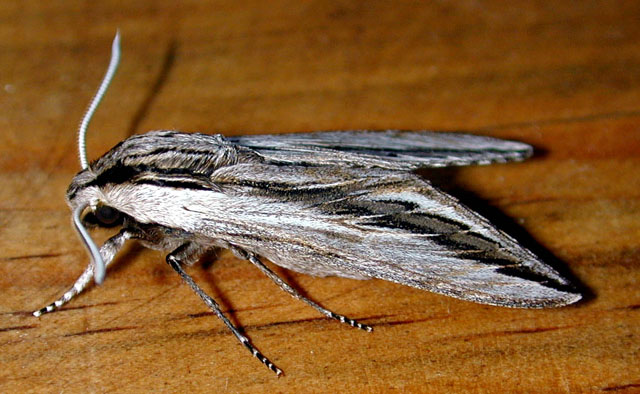
Sphinx dollii (now S, vanbuskirki) male,
courtesy of Mike Van Buskirk.
This site has been created by Bill Oehlke.
Comments, suggestions and/or additional information are welcomed by Bill.
TAXONOMY:
Family: Sphingidae, Latreille, 1802
Subfamily: Sphinginae, Latreille, 1802
Tribe: Sphingini, Latreille, 1802
Genus: Sphinx Linnaeus, 1758 ...........
Species: vanbuskirki Haxaire
|
DISTRIBUTION:
Van Buskirk's Doll's Sphinx Moth,
Sphinx vanbuskirki (Wing span: inches ),
flies in central eastern Texas: NW Bexar County, 3 miles east of Helotes (paratype).
It replaces Sphinx dollii in Texas.
Many thanks to Derek Bridgehouse who alerted me to the new name for the specimens from Texas, previously treated as S. dollii.

Sphinx dollii (now S, vanbuskirki) male,
courtesy of Mike Van Buskirk.
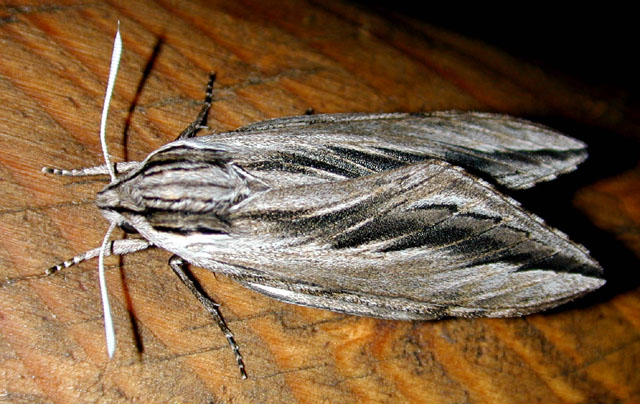
Sphinx dollii (now S, vanbuskirki) female,
courtesy of Mike Van Buskirk.
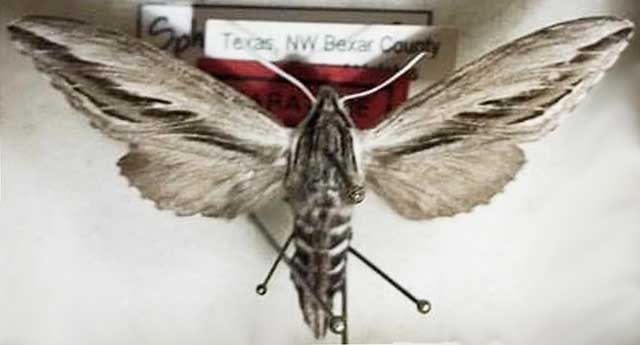
Sphinx vanbuskirki PT, NW Bexar County, Texas,
August, 2006, courtesy of Derek Bridgehouse.
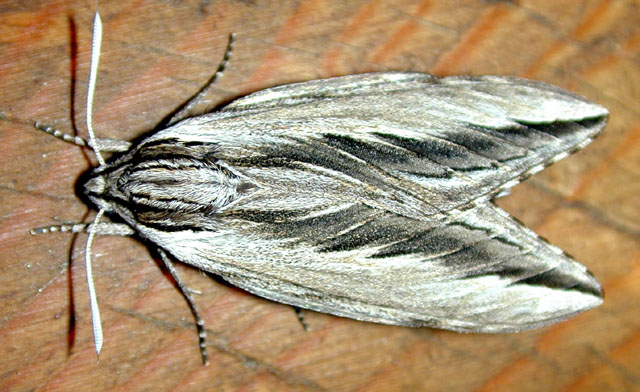
Sphinx dollii (now S, vanbuskirki) female,
courtesy of Mike Van Buskirk.
FLIGHT TIMES:
Sphinx vanbuskirki adults fly in June and August, apparently as two broods.
ECLOSION:
Pupae probably wiggle to surface from subterranean chambers just prior to eclosion.
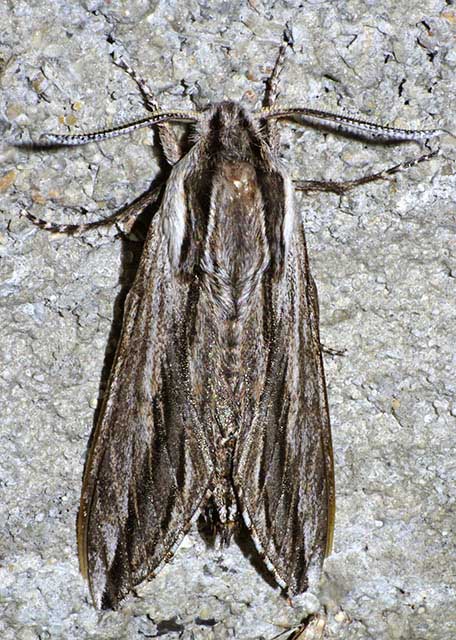
Sphinx dollii, Devil's River, Val Verde County, Texas,
May 18, 2019, courtesy of Dave Barker.
I am not sure if the Val Verde County specimen above is dollii or vanbuskirki.
SCENTING AND MATING:
Females call in the males with a pheromone released from a gland at the tip of the abdomen. Adults probably nectar at a variety of
flowers.
EGGS, LARVAE, PUPAE:
Larval hosts are possibly Alligator juniper (Juniperus deppeana) and other juniper
species.
It is amazing to me how well the larval spiracular patches and false feet match the pattern and colour of the juniper bark.
I believe there is an active intelligence at work as opposed to a gradual evolution through "natural selection".
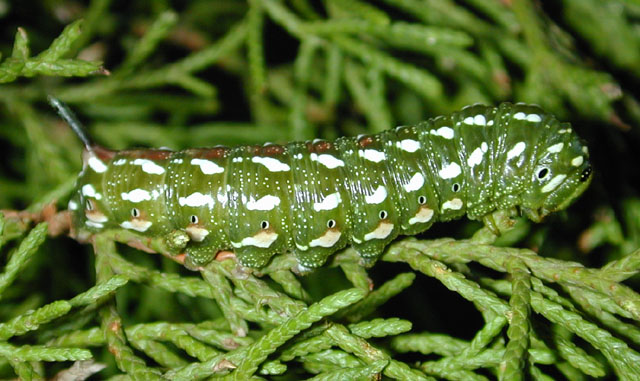
Sphinx dollii (now S, vanbuskirki), final instar, courtesy of Mike Van Buskirk.
Central Texas, Sphinx dollii 5th instar larva:
Ex-ovo from a captured female at my home light (May 10)
About 41 days old, hostplant is Juniperus ashei (Mountain Cedar)
Larvae feed day and night, and seem to like the humidity of the containers (large and tall refriferator containers)
First (2) larvae are pre-pupal today, slightly more red on dorsum Look fairly similar to S. dollii from Arizona.
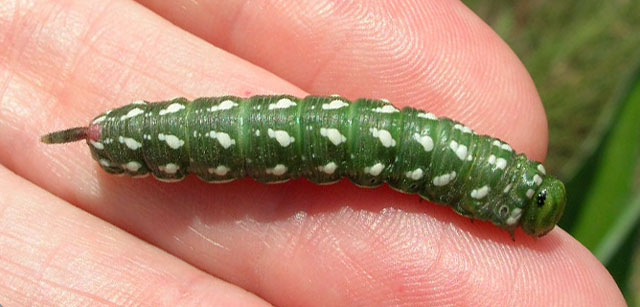
Sphinx dollii (probably now S, vanbuskirki), just north of Austin, Texas, courtesy of David T. Anderson.
David writes, "I live in central Texas, just north of Austin. I would like some help here. Nobody seems to know what the name of
this Sphinx moth I found is. I picked up the caterpillar off my driveway. It looked like a dwarf Sphinx caterpillar. It turned into
a tiny Sphinx moth. It was just under an inch long. I've never seen one like this before. Do you know what it is?"
David's image of the Sphinx dollii/vanbuskirki larva gives a nice perspective on the size of this small Sphinx. The caterpillar had probably left
nearby foliage in search of some soft earth in which to pupate.
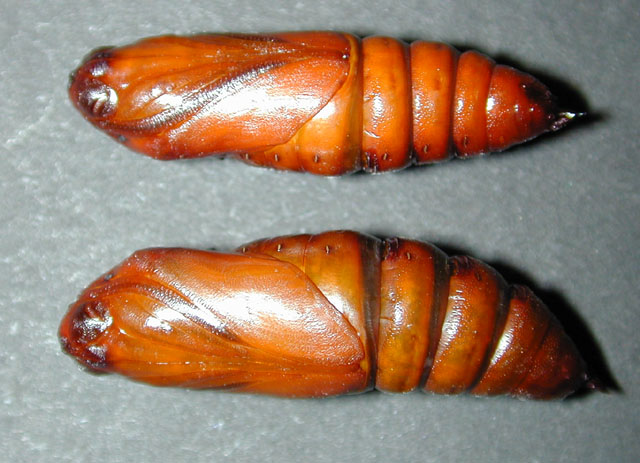
Sphinx dollii (now S, vanbuskirki) pupae, courtesy of Mike Van Buskirk.
Mike writes, "The (13) Sphinx vanbuskirki pupae (pupated early July) are developing very quickly, as evidenced by
these pupal photographs. Larger pupa is female (bottom of pics), smaller is the male (upper on pics). Pupae were very quiet until
development started, and are now quite active. Note that even though this is a Sphinx-Genus pupa, there is no external tongue case."
Return to Sphingidae Index
Return to Sphingini Tribe









